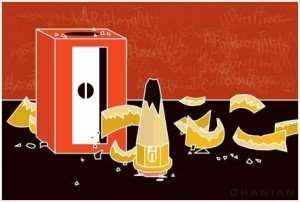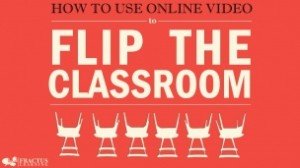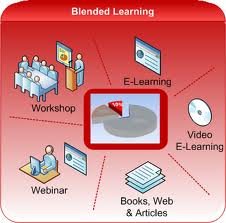Education needs to be retooled as well
By Michael Haran
Press Democrat, Santa Rosa, Ca.
Published: Friday, April 19, 2013 at 7:31 p.m.
Last Modified: Friday, April 19, 2013 at 7:31 p.m.
In reading Andy Brennan and Simone Harris’ Close to Home (“A teacher’s perspective on improved learning,” April 4) and Bill Gates’ column (“Here’s a fairer way to evaluate teachers,” April 5) on teacher evaluations, I found that neither opinion piece addressed the new curriculums that are now being developed by textbook and eBook publishers and the evolution of K-12 teaching methods.
Under President Barack Obama’s Race to the Top program, states are required to meet three main educational criteria: adoption of rigorous academic achievement standards; creation of a program to focus on turning around low-performing schools; and, the most contentious provision, creation of an accountability system that would involve using test scores to evaluate teachers and principals.
In 2010, California became one of 45 states to adopt the new Common Core State Standards initiative to meet these criteria, and the transition is now under way. Assessments aligned with the standards are also being developed and are expected to be in place for the 2014-15 school year, replacing the STAR tests. The new standards and skill requirements have been developed with the goal of creating consistency across the country.
The California Legislature in March 2011 suspended the adoption of instructional materials until the 2014-15 school year. This was due partially to budget cuts but also to allow time for publishers to adapt instruction materials to the Common Core State Standards.
 Just like a good race car mechanic, a teacher needs sound methodology and precision tools to be successful. Anyone who studies K-12 education knows that the industry has long needed a makeover. Everything evolves, and we are now watching an evolution in teaching structure. Many school districts are experimenting with, if not outright adopting, the progressive teaching/learning model called “Flipping the Classroom.”
Just like a good race car mechanic, a teacher needs sound methodology and precision tools to be successful. Anyone who studies K-12 education knows that the industry has long needed a makeover. Everything evolves, and we are now watching an evolution in teaching structure. Many school districts are experimenting with, if not outright adopting, the progressive teaching/learning model called “Flipping the Classroom.”
In flip teaching, the student first studies the topic by himself, typically using video lessons created by the instructor or those provided by an open education resource, such as the Khan Academy. In the classroom, the pupil then tries to apply the knowledge by solving problems and doing practical applications. The role of the classroom teacher is then to tutor the student when they become stuck, rather than to impart the initial lesson. This allows time inside the class to be used for additional activities, including use of “differentiated instruction,” which is more student specific, and “project-based learning,” which is the practical application.
In another progressive teaching/learning model, North Carolina State University College of Education has developed program which they call the FIZZ concept. With this program students record themselves reciting a lesson. The object is to allow students to revisit the video to evaluate and analyze not only what they have learned but also what their peers have learned. The objective is to give the student ownership of the lesson, which they call the highest level of learning. 
Along with the evolution of teaching methodology the next generation of K-12 instruction materials needs to be written to align to these and other progressive teaching models. The publishers now have an opportunity to incorporate modern learning technology with the four predominate student learning styles which are: linguistic (“word smart” they learn by writing and reading); logical-mathematical number/reasoning smart) Spatial (“picture smart” they learn from images); bodily-kinesthetic (“body smart” they need to be moving to learn). I think bodily-kinesthetic learners are many times misdiagnosed with having attention deficit disorder.
If you want to increase test scores, give teachers curriculum that develops the coveted goals of critical thinking, collaboration and communication in all students. You can’t win the race without the right tools.
Michael Haran is research director for the Institute of Progressive Education and Learning. He lives in Healdsburg

Recent Comments